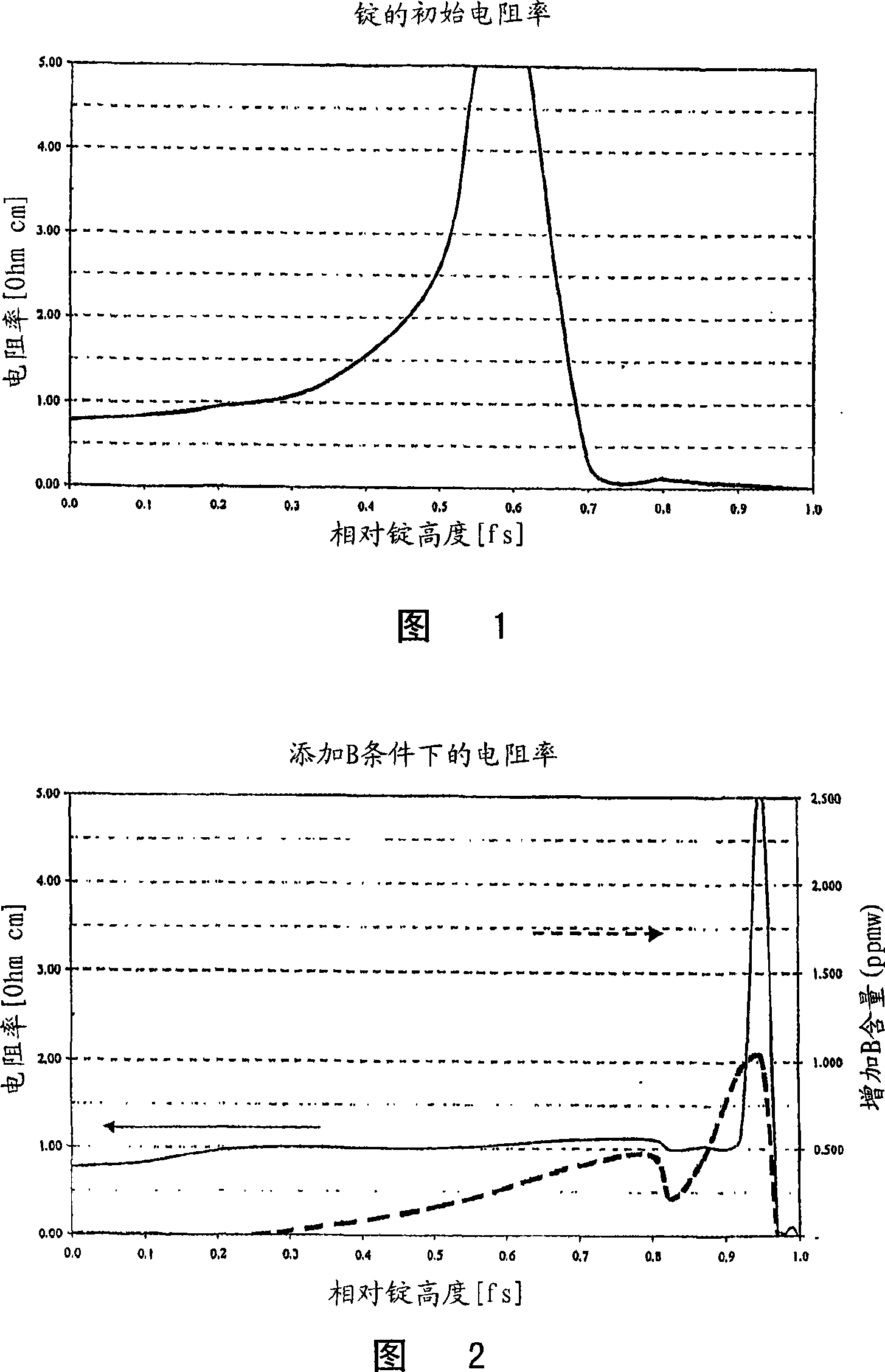Method for producing directionally solidified silicon ingots
A technology for directional solidification and polycrystalline silicon ingots, which can be used in self-solidification methods, chemical instruments and methods, self-area melting methods, etc., and can solve problems such as reducing production costs.
- Summary
- Abstract
- Description
- Claims
- Application Information
AI Technical Summary
Problems solved by technology
Method used
Image
Examples
Embodiment 1
[0012] Embodiment 1 (prior art)
[0013] Directional solidified silicon ingots were produced from a silicon feedstock initially containing 0.8 ppma boron and 3.6 ppma phosphorous. The transition from p-type material to n-type material in a silicon ingot occurs at approximately 60% of the height of the solidified ingot. The resistivity of the as-prepared silicon ingot is shown in Figure 1, from which it can be seen that the transition from p-type material to n-type material occurs at about 60% of the ingot height.
Embodiment 2
[0014] Embodiment 2 (the present invention)
[0015] The same silicon raw material in Example 1 was used to prepare directionally solidified silicon ingots. Boron is continuously added to the remaining molten silicon when approximately 50% of the ingot has solidified. As can be seen in Figure 2, the transition from p-type material to n-type material occurs at greater than 90% of the height of the solidified ingot. The amount of boron added to the silicon melt is also shown in FIG. 2 .
[0016] By comparing the results of Example 1 and Example 2, it can be seen that the transition from p-type material to n-type material moves from about 60% of the ingot height to greater than 90% of the silicon crystal height.
[0017] Thus, with the present invention, it is possible to significantly increase the fraction of directionally solidified ingots (solidified as p-type material or n-type material).
PUM
 Login to View More
Login to View More Abstract
Description
Claims
Application Information
 Login to View More
Login to View More - R&D
- Intellectual Property
- Life Sciences
- Materials
- Tech Scout
- Unparalleled Data Quality
- Higher Quality Content
- 60% Fewer Hallucinations
Browse by: Latest US Patents, China's latest patents, Technical Efficacy Thesaurus, Application Domain, Technology Topic, Popular Technical Reports.
© 2025 PatSnap. All rights reserved.Legal|Privacy policy|Modern Slavery Act Transparency Statement|Sitemap|About US| Contact US: help@patsnap.com

